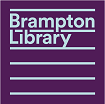It’s Treaties Recognition Week here in Ontario. At Brampton Library, we believe it's our responsibility as an organization to continue to listen to and learn about the truth of our history with Indigenous peoples in Canada as we actively seek reconciliation. As your public library, it's our privilege to offer resources that foster understanding and respectful conversation about treaties as a crucial part of our past as well as our present and future.
What is Treaties Recognition Week?
The first week of every November is set aside to recognize and honour the importance of treaties made with Indigenous peoples. It's an opportunity to learn about treaties and how they’ve shaped our history as well as the significant role they continue to have in the lives of Indigenous and non-Indigenous peoples today.
Treaties Recognition Week offers another vital chance to listen, learn, and commit to finding pathways to reconciliation in true partnership with Indigenous, Inuit, and Métis people.
What are treaties?
Treaties are legally binding agreements created to establish relationships between Indigenous peoples and governments, and they affect everyone. How they have been honoured — and frequently dishonoured — has set the tone and terms of relationships with Indigenous people.
Three important things to know about treaties:
- Treaties are law. There are many treaties in Canada, and they can vary substantially by their terms, their history, the nation(s) affected, and their consequences.
- We are all treaty people. In Canada, we all live on land shaped by agreements made by governments with Indigenous peoples. Most things we do are shaped by treaties, including driving, working, hiking, fishing, and buying a house. Treaties govern part of our relationship together with Indigenous peoples. We have a collective responsibility to honour treaties and respect the original inhabitants of this land. We can do this by learning about treaties, listening to Indigenous perspectives, and respectfully asking questions.
- Learning treaty history is a vital part of truth and reconciliation. Truth and reconciliation is about pursuing what's best for everybody. We recognize that we need to build a community founded on the principle of respect for all people and the land we share.
Which Indigenous nations lived in the area that is now Brampton?
The area on which Brampton is situated is known to have been home to Indigenous people including the Huron-Wendat, Haudenosaunee, and Anishinaabe, including the Mississauga.
What treaty territory is Brampton in?
Brampton is part of Treaty 19, also called the Ajetance Purchase. The land on which Brampton is built was purchased by the British colonial government from James Ajetance, chief of the Mississaugas of the Credit, on October 28, 1818. In exchange for 2,622 square kilometres of land, the Mississaugas of the Credit were supposed to receive 522 pounds and 10 shillings in goods every year (roughly equivalent to over $500,000 in today's currency). You can learn more about the history of Brampton from the Canadian Encyclopedia.
Understanding Indigenous words in Brampton
The history of Indigenous people in Canada is all around us in Brampton, found in the names of places, organizations, and streets. Here’s some information about a few found around the city.
Chinguacousy (area of Brampton): Anishinaabemowin language, Chippewa Ojibwe dialect; according to a Government of Canada website, the name "commemorates Shingwaukonse[,] a prominent Anishinaabe leader who took part in the capture of Fort Michilimackinac during the War of 1812. His name translates to little pine." (Stories from the Land: Indigenous Place Names, Government of Canada)
Mississauga (City of Mississauga) Anishinaabemowin language, Ojibwe dialect, "River of Many Mouths."
Orenda (Orenda Rd., Orenda Ct.): A Wendat word that refers to the Iroquois belief in spiritual energy inherent in all people and the environment to varying degrees.
Manitou (Manitou Park): Anishinaabemowin language, "spirit." The life force that exists everywhere and in everything (similar to "orenda").
Conestoga (Conestoga Dr.): Believed to be an Iroquois term for the Conestoga people who originated in what is now Pennsylvania. The meaning is said to be "people of the cabin pole."
Algoma (Algoma College): A place name appearing across Canada and the US, the precise origin and meaning of the word is unclear, but all proposed definitions agree it originates from Indigenous languages.
What can we do to honour treaties?
Learn.
There are many resources that can help your continued learning about Indigenous peoples and the history of treaties in Ontario. Pick up Greg Poelzer and Ken S. Coates's book, From Treaty Peoples to Treaty Nation: A Road Map for all Canadians, and hear why it is so important for all Canadians to take up their responsibilities as treaty people. If you’d like to learn more about the treaties in your area, the Ministry of Indigenous Affairs has shared an overview of treaties in Canada and have created an interactive map that you can use to discover the treaties and reserves in your area.
If movies are more your thing, check out Kanopy's selection of Indigenous study films, or you can check out Mango Languages Indigenous language courses, all of which are available with your library card.
Listen.
We can listen to Indigenous people willing to share their experiences and perspectives.
- Videos (closed captioned): Indigenous voices on treaties
- Video (closed captioned): We Are All Treaty People with Elder Harry Bone and Commissioner Loretta Ross
- Video (closed captioned): WAMPUM TALK: We Are All Treaty People with Teyotsihstokwáthe Dakota Brant
- National Centre for Truth and Reconciliation
Share.
We can honour Indigenous peoples and treaties made with them by ensuring that their stories and their treaty experiences are shared, especially with new generations.





 905-793-4636
905-793-4636